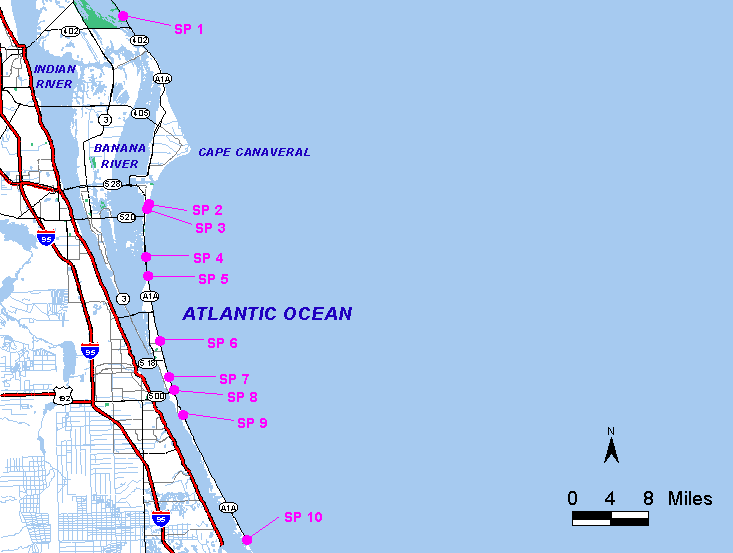It's a New Day in Public Health.
The Florida Department of Health works to protect, promote, and improve the health of all people in Florida through integrated state, county, and community efforts.
Florida Healthy Beaches Programs and Harmful Algae Blooms (HABs)
Environmental Health Services
- 321-633-2100
- Brevard.EHS@flhealth.gov
-
Fax
321-633-2151 -
Mailing Address
2725 Judge Fran Jamieson Way, Suite A116
Viera, FL 32940-6605
Coastal beach water samples are collected bi-monthly by the Florida Department of Health in Brevard County (DOH-Brevard) and are analyzed for enterococcus. Enterococci is an enteric indicator bacteria that normally inhabit the intestinal tract of humans and animals. The presence of enteric bacteria is an indication of fecal pollution, which may come from storm water runoff, pets and wildlife and human sewage. When enteric bacteria in high concentrations are present in recreational waters and are ingested while swimming or enter the skin through a cut or sore, they may cause human disease, infections or rashes.
Environmental Public Health is responsible for issuing health advisories or warnings when these conditions are confirmed. Sampling is conducted bi-weekly from the first week of March to the last week of September.
All sample results are posted on the Florida Healthy Beaches Program website.

The sampling sites are:
- SP 2 Jetty Park
- SP 3 Cocoa Beach Pier
- SP 6 Pelican Beach Park
- SP 7 Paradise Beach Park
- SP 9 Spessard Holland North
- SP 10 Sebastian Inlet North
*We no longer sample SP 1 Canaveral National Sea Shore and SP 5 Patrick AFB North because they are federal property. We also no longer sample SP 4 Cocoa Beach - Minutemen Cswy and SP 8 Indialantic Boardwalk
The U.S. Environmental Protection Agency (EPA) created the Beach Advisory and Closing Online Notification (BEACON) system to provide the public a database of pollution occurrences for coastal recreation waters. To review nationwide beach advisories, closures, and sample results please visit: WatersGeo.EPA.gov.
HABs: Harmful Algae Blooms
For more information on Red Tide and Blue-Green algae, visit the DOH site for HABs: HABs: Harmful Algae Blooms | Florida Department of Health
For more information on where Red Tide is located, visit: Red Tide Current Status | FWC
For more information on where blue-green algae (cyanobacteria) is located, contact The Florida Department of Environmental Protection (DEP) at 1-855-305-3903 or visit the DEP website Algal Bloom Dashboard | Florida Department of Environmental Protection.



Connect with DOH